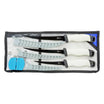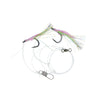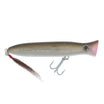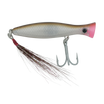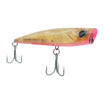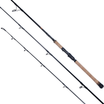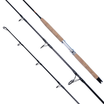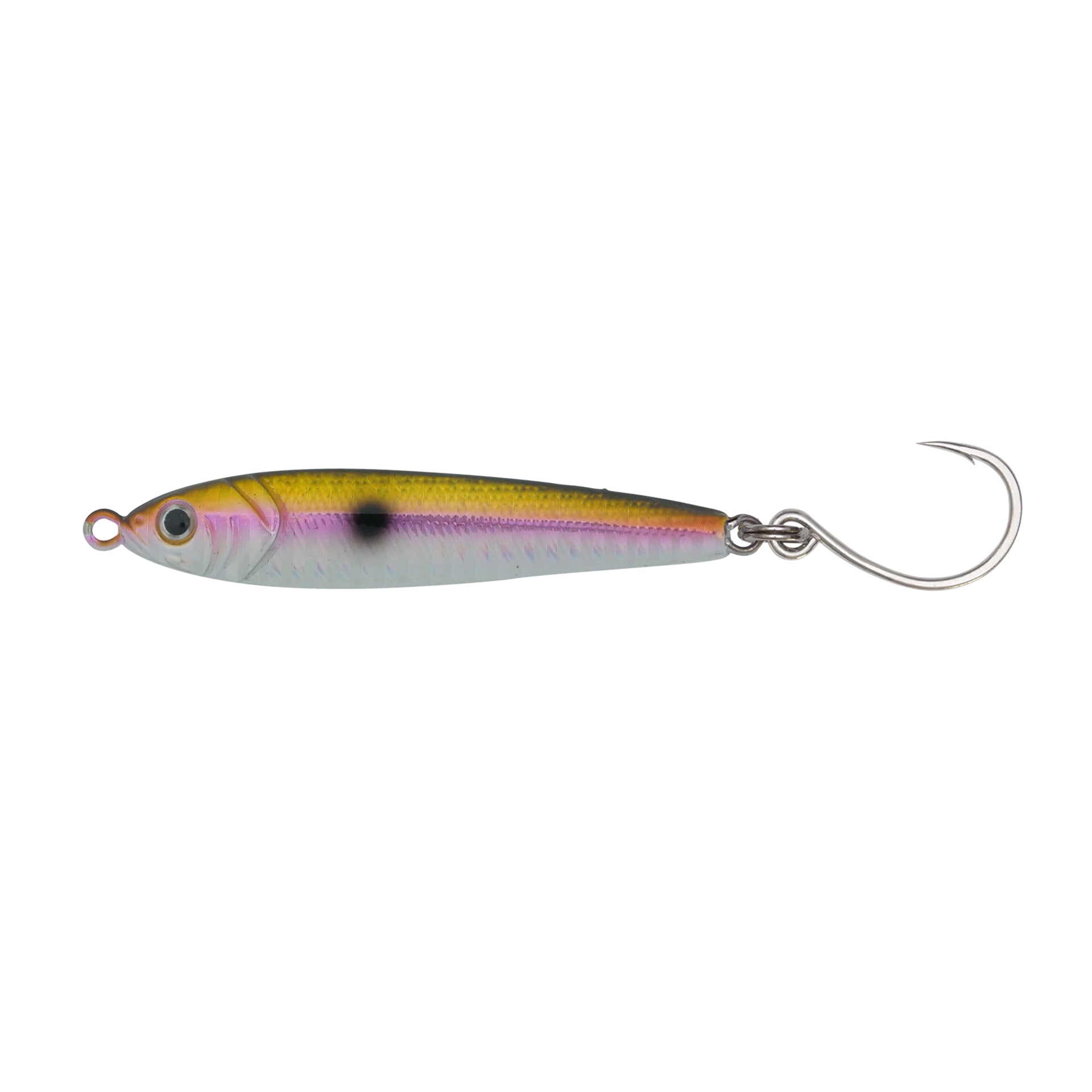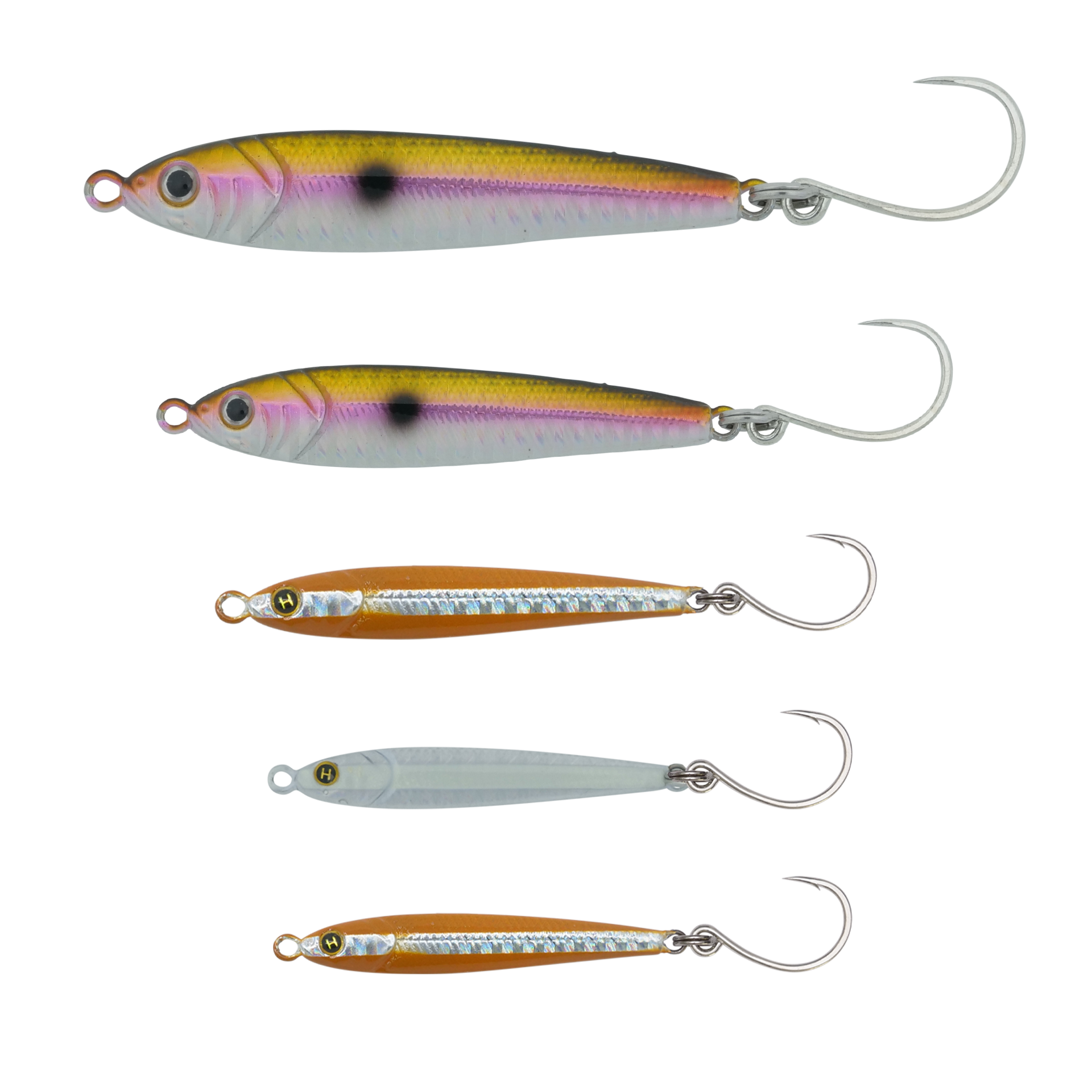On this shoot, I was in open water in Nantucket Sound running the stretch between East Falmouth and Hyannis, (a known albie run), searching for schools that were in the area which is typical for Late August. I knew from reports they were indeed around, but they were being picky about what they hit and at what speed. There was plenty of bait but spread out in small schools which means the Albies were too. A textbook scenario for using imitator patterns for False Albacore!
That’s when I decided to tie on the Hogy Peanut Jig. With its imitative design and it’s steady bobble built right into the lure at slow speeds, I knew I would get a lot or “presenting” time on each retrieve and have something sexy to look at for the Albies that would consequently at a really good look at slow speed. An imitative small lure, long casts and a “walk and gun" approach, I was confident it I would have a successful morning,
Approach: Positioning Strategy
When I’m targeting Albacore, especially on days when they’re easily spooked, I like to take a slow, measured approach. I use what I call the "walk & gun" method—this involves idling the boat at a low, steady speed. The key is not to make sudden changes in RPM, which I’ve found often spooks the fish. Once I spot a school, I cut the engine, let the boat drift, and get ready to cast. This slower, quieter approach allows me to sneak up on them without causing too much disturbance. I am convinced albies (and/or bait) are spooked by RPM changed in outboards. The more the disturbance that happens in a given area over the course of a day, the finickier the albies will become.
Gear: My Setup for the Day
- Rod and Reel: I used a 7’ medium-action rod that’s perfect for handling the hard runs and erratic movements of Albacore. Paired with a high-capacity reel, I felt confident I had the setup to keep these powerful fish on the line.
- Line Selection: I went with a 20 lb braided line, and it paid off. 20lb is a little harder to work with but will get you an extra 20’ over the common 30lb brain many anglers use. The braid is sensitive enough to feel even the lightest taps, but strong enough to handle the fight.
- Lure Choice: The real game-changer was the Hogy Peanut Jig. I chose the peanut bunker pattern, as it mimicked the small pods of peanut bunker that were schooling that day. The Peanut Jig’s built-in wobble gave it a natural swimming motion that Albacore just couldn’t resist, even at slow speeds and a good look at the lure. The jig’s ability to cut through the water and stay in the strike zone made a big difference too.
Technique: Casting and Retrieving for Success

- Casting and Retrieving: I made sure to cast a little ahead of the school’s trajectory, letting the jig fall into the strike zone. My retrieve was a mix of medium and medium fast, with pauses in between to simulate an injured baitfish. That erratic action, combined with the jig’s wobble, was what drew the strikes. I’ve found that varying your retrieve speed is key—it keeps the fish guessing and more likely to hit the lure.
- Hook Setting and Playing the Fish: Once I hooked an Albacore, I kept the tension steady, letting the fish take line as needed. These fish fight hard, so it’s important to stay calm and keep pressure on the line.
Environmental Factors: Adjusting to the Conditions
- Wind Conditions: It was a relatively calm day, but I had to adjust my casting angles a few times to account for light gusts. Wind can push your lure off course, so keeping an eye on how it’s affecting your cast is important.
- Water and Tide Conditions: The water clarity was perfect, and the Albacore were feeding near the surface. On days like this, when the water is clear, it’s even more important to take a stealthy approach. The "walking gun" method worked wonders, as the fish were less likely to spot me coming.
- Weather Considerations: Clear skies made it easy to spot bird activity, which helped me locate the schools of Albacore. The sunlight also helped with visibility in the water, making it easier to time my casts just right.
Situational Factors: Reading the Water and Electronics
- Reading the Water: Birds were my best friends on this trip. Whenever I saw them diving, I knew the baitfish—and Albacore—were nearby. Watching for surface disturbances was also key; it’s often the first sign that a school is feeding.
- Using Electronics: I didn’t rely too heavily on my fish finder, but it came in handy when I was trying to position myself close to the school. Having a GPS on board also made it easier to keep track of where the action was happening.
- Barbeless Hook: I was using a barbless hook, which made catch and release quick and easy. This also meant less handling time, which is always better for the fish.
- Handling and Release: Once I brought an Albacore to the boat, I handled it carefully to minimize stress. Using a barbless hook made releasing the fish quick and easy. I always make it a point to get them back in the water as soon as possible to ensure they stay healthy after the fight.
- Conservation Practices: I’m a big believer in catch-and-release, especially when it comes to smaller fish. It’s important to respect the fishery and do what we can to ensure future generations can enjoy the same experience.
Key Takeaways from My Trip
Overall, the Hogy Peanut Jig paired with the "walking gun" approach was the perfect combo for targeting finicky Albacore. The slow, steady positioning and varied retrieve speeds helped me land several fish without spooking the school.
Key Points:
- The "walking gun" method works wonders for sneaking up on Albacore.
- A 20 lb braided line provides the strength and sensitivity needed for this type of fishing.
- Varying retrieve speeds with the Hogy Peanut Jig triggers more strikes.
- Handling and releasing fish quickly is crucial for conservation.




















